The past decade has seen a spike in mergers and acquisitions, as conglomeration and consolidation seem to be the trend of the future. Healthcare, technology and media-related brands have experienced the most consolidation. Mergers and acquisitions offer attractive opportunities to consolidate talent, infrastructure and relationships, but an equal number of challenges. Luckily, Bluetext has experience with many clients seeking digital marketing and branding guidance either after a successful M&A event, or with an eye to the future of the company and it’s M&A potential. A consistent lesson learned from our clients across a wide variety of industries is the importance of branding, especially in the early M&A planning.
WHY a company should rebrand after an acquisition
One of the key challenges includes branding, which when done correctly creates a harmonious industry presence built for long term success. But when branding is neglected, it runs the risk of introducing new problems that might damage a firm’s reputation or open up rifts between internal teams. While key stakeholders tend to focus on talent, business operations or business development, branding can fall to the back burner. Though as an experienced brand marketing agency, Bluetext knows the risk of deprioritizing corporate messaging & branding. Without unified brand creative and messages, a newly consolidated company lacks the foundation and united front to be successful in the marketplace and internally.
Often newly merged companies decide to either adopt one existing brand, or decide to create a new brand for a fresh look when they go to market. This decision is crucial to make early on, as it sets the tone for the entire process. While there are pros and cons to both avenues, Bluetext has observed companies that opt to create a new brand identity and corporate messaging often experience higher excitement, zeal and attention with the new company announcement. A blank slate for the brand story, key messages and creative visuals gives all stakeholders the chance to weigh in and feel heard in the process. The end result is a new brand that all internal stakeholders feel connected to and proud to represent both digitally via social media and physically via corporate swag.
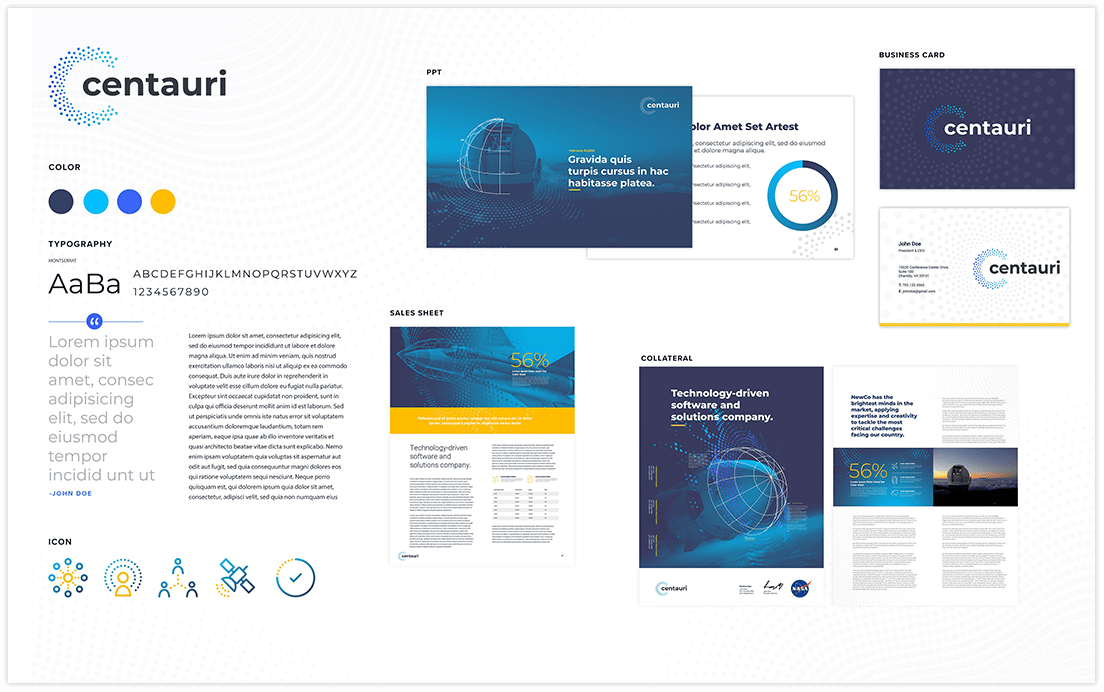
HOW new branding affects the business
Creative brand agencies tend to think of two top considerations for branded materials: internal communications and external marketing. Both are of significant importance to any company, but especially of a newly merged or acquired one.
Well-branded internal communications can serve as a unifier for a new company and its employees, especially if two companies with distinct cultures are merging. Having the same style business cards, Powerpoint templates, or even branded swag creates a sense of kinship amongst colleagues. Especially in larger corporates, consistent brand assets can send a subtle but effective message of cohesion when connecting with new colleagues or other office locations.
The second, slightly more obvious reason for branding is external marketing. Your go-to-market strategy should be reinforced with strong branding and messaging. Whether your primary goal is to appeal to customers, stand out from competitors, or attract talent, you need well-developed marketing materials in your toolkit. Especially when pitching to prospective clients or customers, it would look disjointed and confusing to see conflicting branding across a company’s website, resources, or collateral.

From press announcements to rebranded websites and collateral, Bluetext is a full-service digital marketing agency that can guide your company through than rebrand or M&A process. Contact us to learn more about our services.
The Latest in LinkedIn
LinkedIn is taking users’ ability to “connect” to the next level. This week LinkedIn is rolling out new profile features that will empower a whole new segment of users with the opportunity to become content creators and professional influencers. The professional networking platform announced the unveiling of a new “Creator Mode” to build their voice and audiences.
Social Platforms Taking a Cue from One Another
These new features are the latest of many social media shifts, as we notice a trend of social platforms taking cues from one another. Especially following almost a year of exclusively virtual networking, the media landscape is rapidly expanding to include a number of opportunities for professional and personal success. The rise of micro-influencers on Instagram, TikTok, Twitter, Clubhouse, etc. has earned the trust and loyal following of their audience members for a particular subject. There is no shortage of creative innovation on these platforms, with professionals having to develop unexpected use cases. For example, did you know personal finance TikTik was a thing? Yes, there is a growing community of young professionals offering personal finance and investment advice to followers of #FinTok or #StockTok. This just serves to show that social media platforms have much deeper opportunities for content creators than showing off their latest recipes and dance moves. With rising competition from emerging platforms, such as the audio-only app Clubhouse, or viral sensation Tik Tok connecting niche interest communities, LinkedIn is debuting similar features to remain the mainstay for professional networks. Users can now create stories (taking cues from Facebook, Instagram, and Snapchat), weigh in on trending topic hashtags (#thankyou Twitter), and now become content curators with “Creator Mode”.
Creator Mode & Influencer Opportunities
The new “Creator Mode” for LinkedIn allows users to pin specific hashtags to the top of their profile to signify the themes they frequently post about. With creator mode enabled, the presentation of profiles is altered to emphasize the hashtags directly under job titles. This moves up the “Activity and Featured” sections to highlight posts and links that a user shares before the “About” bio boxes. This shifts the content hierarchy from a self-written bio, to a curated collection of user-generated content. This allows users to focus their profiles on niche genres and topic areas to own a small space as thought leadership. In a nutshell, “Creator Mode” offers users an opportunity to connect on a more meaningful level to targeted audiences, therefore promoting themselves to influencers amongst their community.
Additionally, users can “Follow” these influencers rather than adding them to their personal networks. Now instead of feeling uneasy sending network invitations to a complete stranger, users can follow their favorite thought leaders just as easily as on other social networks.
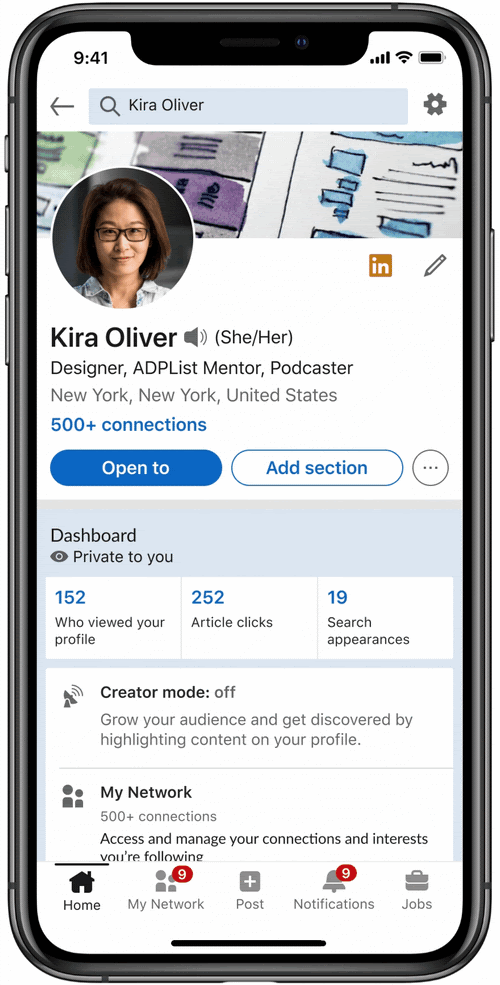
What else is included in this update? LinkedIn users can upload video cover stories, creating an interactive introduction to their profile. Much like a Facebook or Instagram story, the cover story can be initiated to play on the click of a profile photo with an orange ring. The uniquely new aspect of these cover stories is what is known as the “Harry Potter effect”, where the video will autoplay silently in the profile photo frame to signify available video content. These new features will help propel the already growing importance of video-based content on social platforms. Many users see this new video feature as an opportunity to promote themselves with a personalized pitch of their skill sets. Almost like a precursor to a job interview, it grants users the opportunity to conduct a virtual elevator pitch with all of the personality and zest of in person.
What Creator Mode Can Do For Companies
These new updates will be big for companies of almost any industry, but especially in B2B technology, cyber or complex services. Many of whom have been prioritizing thought leadership of leadership and SMEs through whitepapers, research, and media opportunities as means of generating industry attention to their brand. “As our ecosystem has been growing, and as we’re seeing the world of work changing, we’re seeing that content is now a core part of how professionals interact with not only their own jobs but their industries, their peers, and their communities,” Keren Baruch, group product manager for creator strategy at LinkedIn.
Last year 62.1 million LinkedIn users reported logging in at least once a month. This statistic is expected by researchers to jump to 64.7 million in 2021 and reach 70.9 million by 2024. The popularity of LinkedIn is expected to grow significantly, especially as users realize the unique opportunity to take control of their professional success and promote their achievements like never before. The barriers of entry for powerful brands and thought leaders have been lowered, which levels the playing field for companies of any size to become influential industry leaders.
Are you the next micro-influencer of your professional space? With the support of social media and PR agency, Bluetext, you could be! Contact us to learn more about our digital marketing and PR services.
Considering a new name for your business? Whether your company has just undergone a merger or acquisition, or perhaps just needs a fresh rebrand, corporate naming can be just as equally exciting as it is daunting. If you have kids you probably relate to the decision anxiety that comes with naming. Will the name fit his/her personality? Will the name be memorable and unique? Will it withstand the test of time? The classic choice overload paradox sets in. The infinite number of possibilities makes the ultimate decision even harder. Not to mention the significance a corporate name can hold. Choosing your company’s name is one of the most important decisions you’ll make, as it sets the tone for all future branding initiatives. For better or for worse, your business name helps create a strong first impression with potential customers and investors.
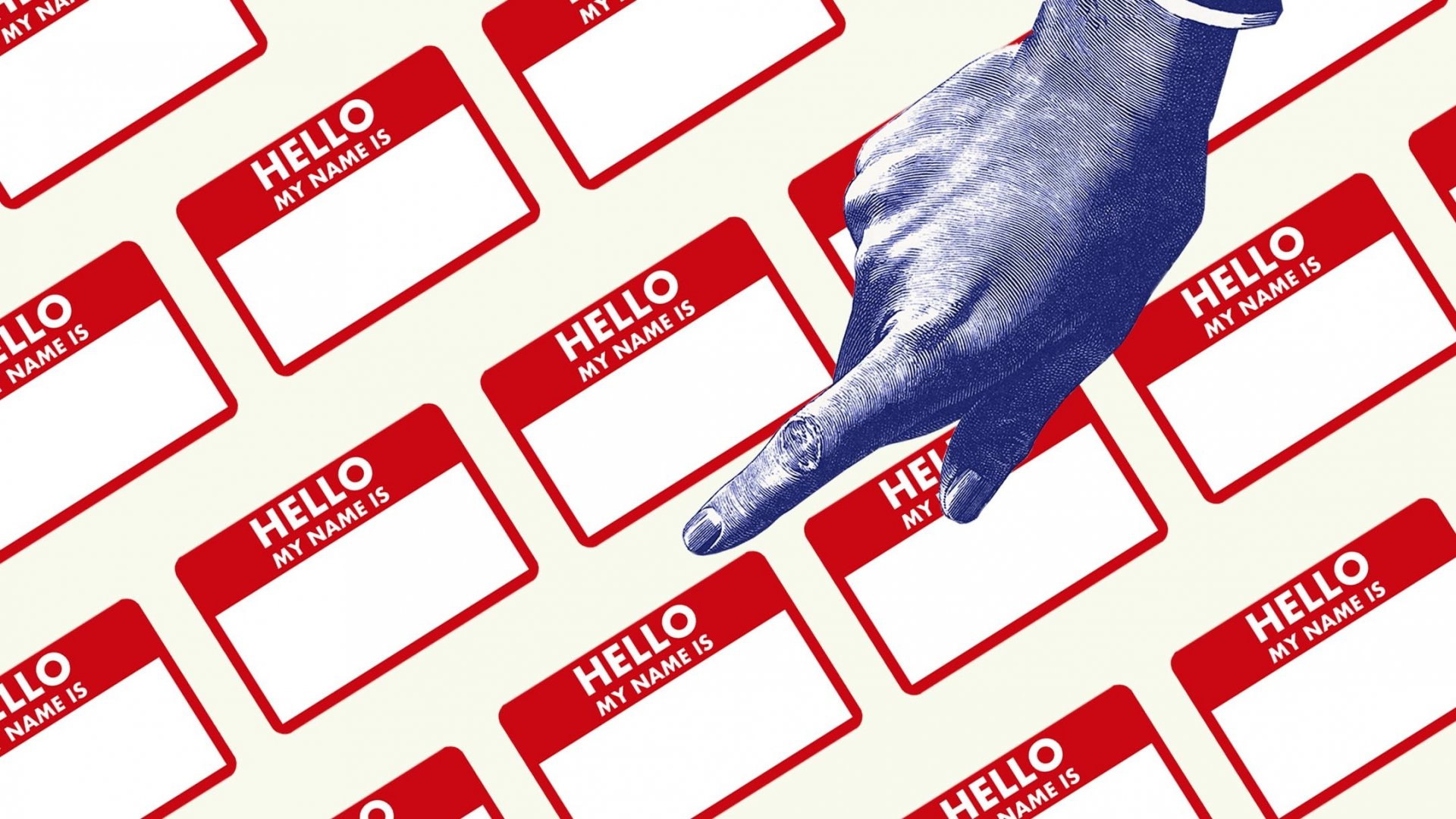
As a brand marketing agency, Bluetext has assisted a number of companies in the naming selection process. Many of our clients considering a new name often ask, “Well, where do we begin? How do we name our company?” And truthfully, there is no right answer to that. Coming from years of branding and messaging experience, we’ve learned successful new names can arise in a variety of ways, but names do tend to flatline for a few consistent reasons. So, we figured it would be best to start with what not to do, leaving exactly what to do open to the unique circumstances. Keep reading for a number of tests that can help you weed out names that can help you avoid brand regret down the road.
How Not to Name Your Company
Copy the Competition: Don’t select a name that mirrors others in your industry. Especially if you are in a crowded industry, or perhaps have business offerings that span multiple industries, it’s paramount you do thorough research to ensure there are no similarly spelled or pronounced competitors.
Twitter Test: Nowadays it is expected (and advantageous!) for every business to have social media accounts. One quick test for your new company name is whether it’s compatible with common social media handles. If your name is too long to be a Twitter handle (maxed at 15 characters), your handles will need to be adapted on other platforms as well.
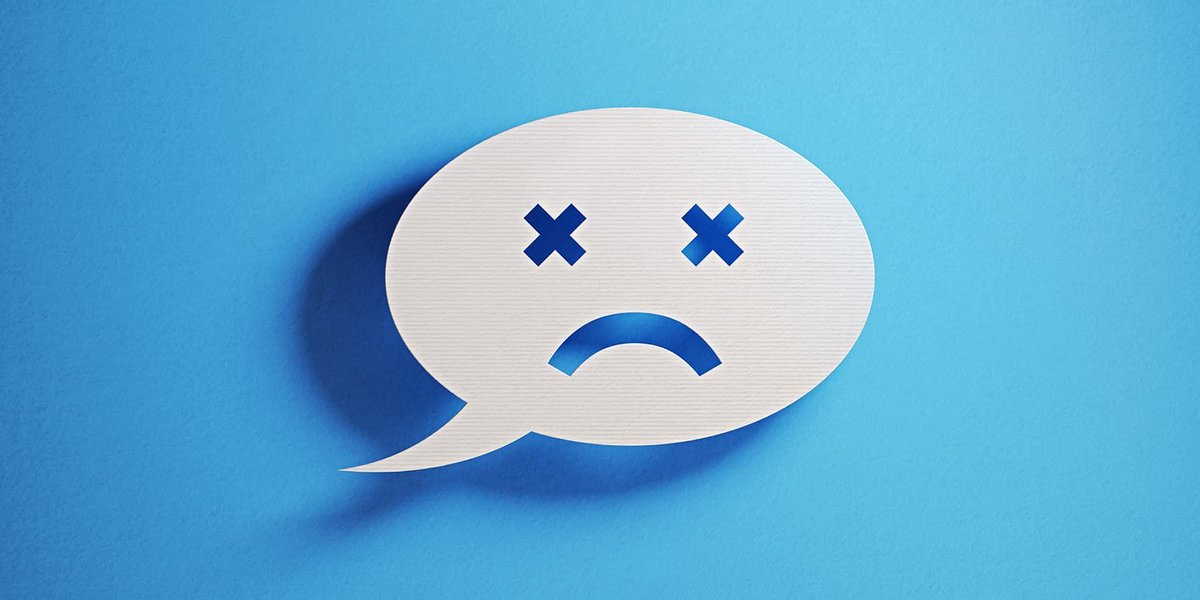
Go Crazy with Creative Spelling: One of the biggest trends in naming is creative adaptations to spelling common words. For example, how Waze adapted the spelling of “ways” to creatively communicate their business. This strategy can be successful but can risk confusion. The issue with having an overly complex name is that you’ll always have to spell it when you say it because it isn’t spelled how people hear it. This could cause challenges with potential customers finding your business.
Bluetext’s Rule of Thumb: When doing alternate spellings of names, try and stay to one letter tweak per name.
Disregard the Domain Availability: Don’t fall in love with a name with an unavailable URL. When researching or considering new names, we recommend looking up the domain options immediately.

Let in Too Many Voices: While great in theory, opening this discussion to the masses is never a good idea. It is incredibly unlikely that involving everyone will result in a consensus. Oftentimes involving too many decision-makers is like having too many cooks in the kitchen, it just results in an inefficient and stagnant discussion of competing opinions.
Bluetext Rule of Thumb: Involve only key decision-makers. Ones with the company’s best interest in mind, and those able to leave their egos at the door. It may be worth taking the decision to a vote when you have selected a top 2 or 3 names, but in the early ideation and decision phases, be sure to limit the discussion to only relevant stakeholders.
Frankenstein Phrases: One common naming tactic is to combine parts of an adjective and a noun into a new word. While great in theory, more often than not the name seems disjointed or forced. The two words might work great on their own, but just don’t go together. Other common fallbacks include truncated words like Tech, Corp, or Tron.
Go Too Generic: While your name should not be overly descriptive and superfluous, going too generic can also be dangerous. Random acronyms don’t give any hint into your brand, offerings, or story. A good test is whether someone could tell what industry you’re in by the name. Overgeneralizing could cause people to overlook your company if there is no sense of differentiation. Conversely, you also don’t want to use a name that is too specific to the industry you’re in, as doing so will limit your ability to expand into new territories and sectors with the same company name.

Forget to Practice Pronunciation: One of the most telling tests of a name: Can it be easily pronounced? Ask unbiased third parties to read the name aloud. Did they pronounce it as you expected? Can you easily repeat the word over and over without mispronouncing? Does the name roll off the tongue or is it a jumble of awkward consonants? Just like you would want your brand to look and feel right, you need your company name to sound and feel right.
We’ve shared our top eight ways not to name your company, but what should you do? Consult a professional branding agency. Hiring a third party brings in a fresh perspective to your company and overall brand strategy. Not to mention they will have a staff of professional copywriters who can help craft your new name and corporate messaging.
Need a new name? What are you waiting for? Contact Bluetext to learn more.
The past couple of years has ushered in a number of changes for the marketing strategies of major defense and global technology brands serving the federal government. As a trusted marketing and PR agency to B2G clients, Bluetext has seen a massive shift towards digital marketing initiatives in a short amount of time. Once upon a time, government defense and technology marketing was concentrated in stacks of Federal IT and Defense magazines. These were reams of tangible, tactile publications that B2G paid big bucks to advertise in. However, the recent shift toward digital advertising has been embraced across industries– government agencies included.
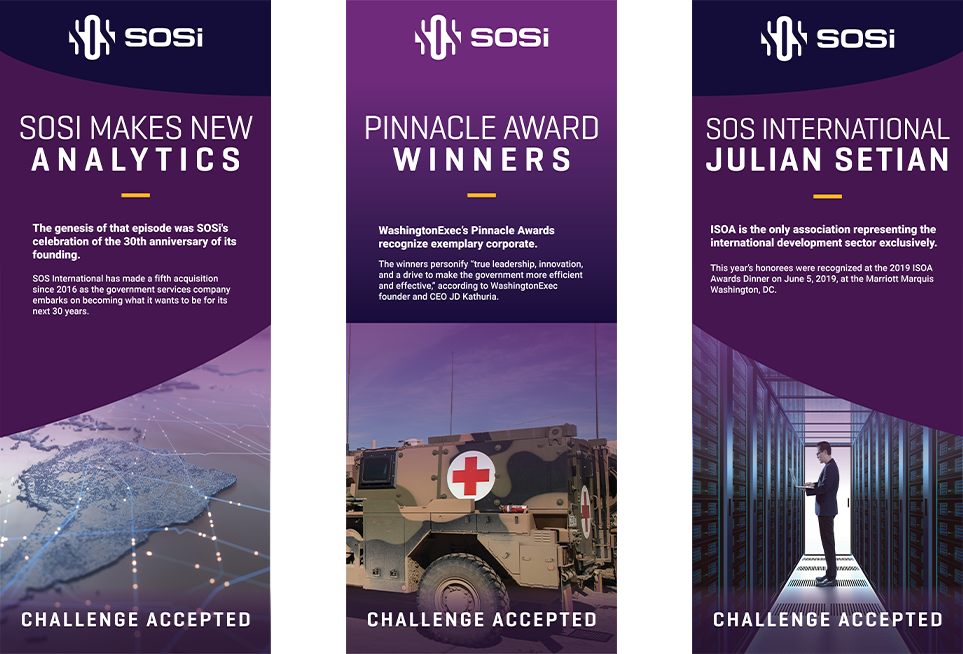
The precipitous decline in print publications, combined with the impact of COVID-19 and budget cuts on the federal agency buyer’s ability to travel to attend industry conferences, trade shows and seminars has flipped traditional marketing models on their head. The resulting void of strong physical content and branding has led to an increased thirst for more readily accessible “premium” content—white papers, e-books, survey reports and other in-depth materials that can be indispensable for government decision-makers. Digital content marketing has been embraced as a cost-effective and more accessible means of reaching target government buyers.
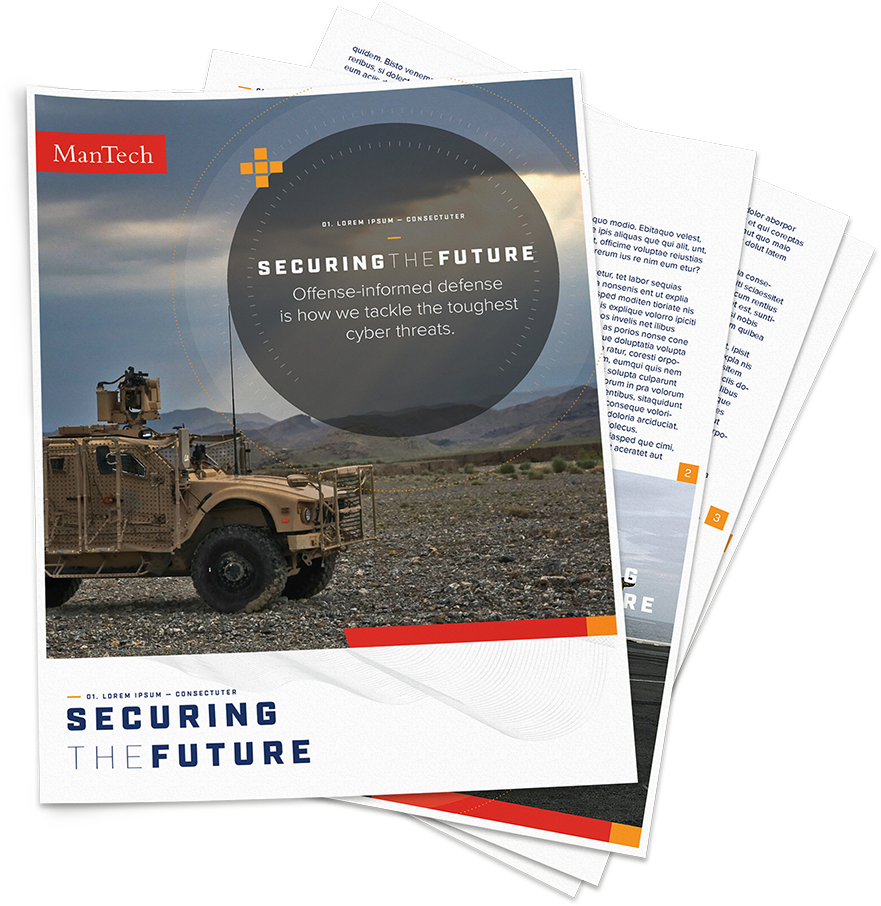
Previously, B2G companies could load up on traditional marketing to push government contracting vehicles—their IDIQs, GWACs and GSA Schedules – especially at the end of the federal buying season. There was once a time and a place for that – but no more. Marketing is now forever changed thanks to Al Gore – or whoever invented the internet. Digital marketing initiatives have created opportunities to distribute content marketing at any time and any place.
This opens a door of opportunities for many small government contracting agencies, as the playing field has been leveled by online content. As a result, companies have evolved their digital marketing strategies to consider government buyers as real buyers just like you and I, involved to varying degrees in researching, influencing and taking themselves 75 percent through a buying process to ultimately select a solution that your company – and your 10 largest competitors – all provide.

This is why it is critical to target your marketing with premium content to specific and very real buyer personas. You need to put yourselves in their shoes to differentiate your brand and fill that void with contextually relevant content before your competitors do. No matter who that buyer is, they are all facing the same quandaries:
- I have a problem, but I don’t know what the solution is.
- I know what some solutions are, but I don’t know which one is best for me.
- I know which solution I want, but I don’t know who to buy it from.
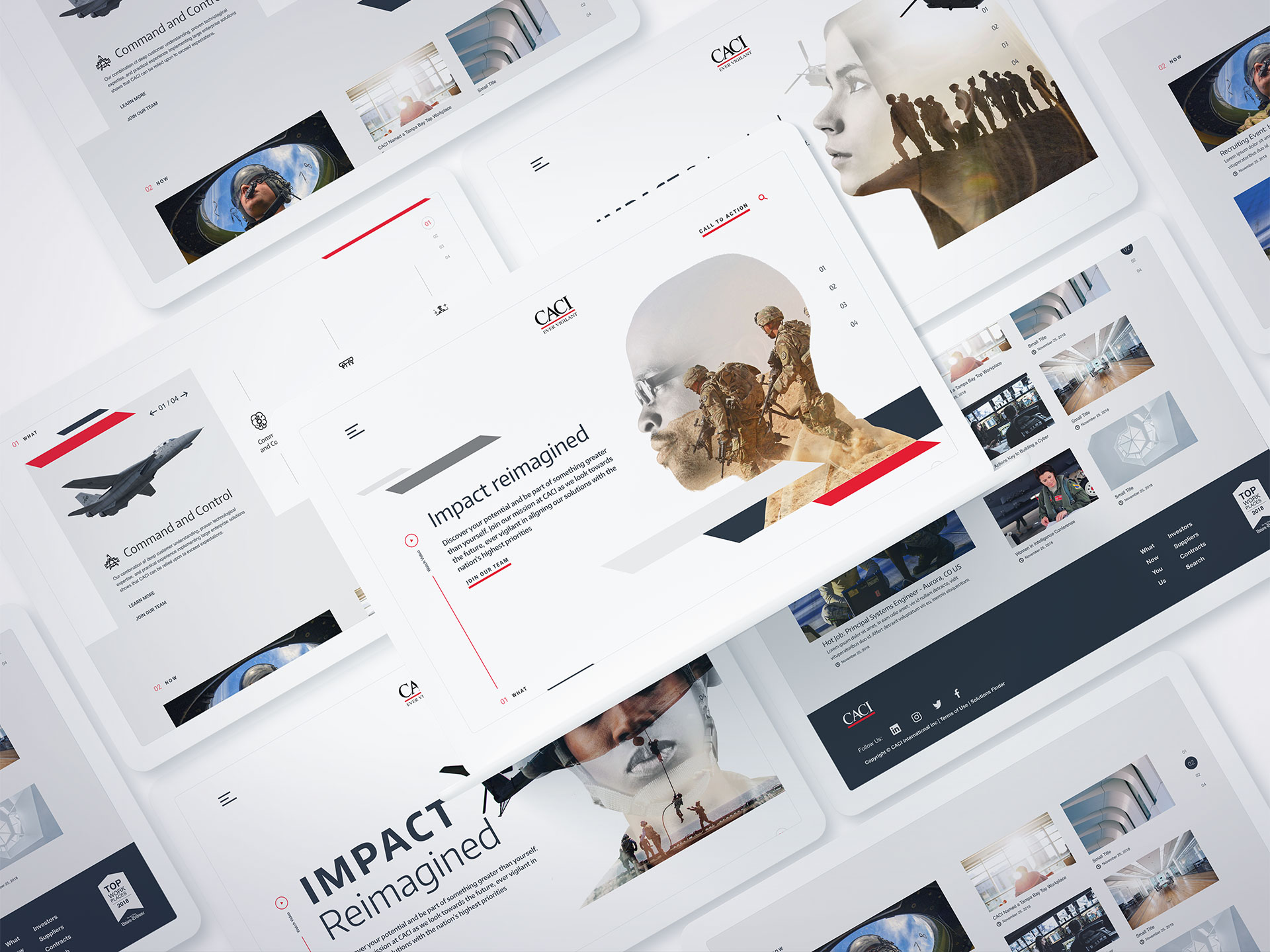
The best way to answer all of these questions is with content. While the solution seems simple, many companies do not yet have mature content marketing strategies and lack the in-house resources needed to generate enough thoughtful, relevant content to drive engagement that results in traction for their brands in this market. The other challenge is harnessing the thought leadership of their subject matter experts. The people inside their company who have the expertise on issues most relevant to your target audience often do not have the time or have not been engaged to contribute content on a regular basis. As a result, marketers are struggling not only to develop the editorial calendar but more importantly the content itself.
Digital marketing agencies acknowledge that the secret to successful content marketing is two-fold. Firstly, it requires thoughtful and relevant content to your target personas, but also memorable brand application. Put yourself in the shoes of a government buyer evaluating you and your 10 closest competitors for a new contract. Your company may have the most powerful piece of thought leadership out there, but if it’s not branded or visually appealing it will likely get lost in the number of companies and content being considered. The last thing you want is to invest time and energy in an in-depth whitepaper, but have the reader not even remember which company it came from. Well-branded collateral allows you to layout content strategically, emphasize the key points and create brand association with the powerful words on the page.
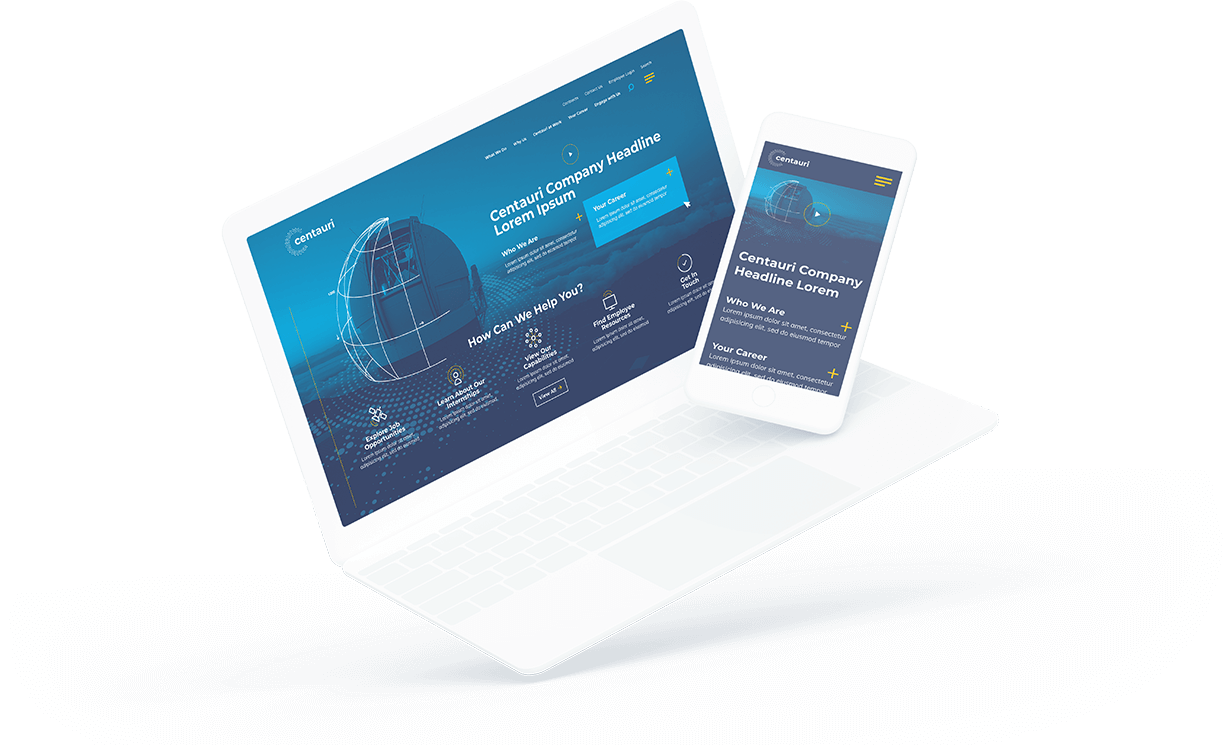
It’s no secret that a lot of successful marketers are turning to agencies to overcome this very challenge. When they do, they realize very quickly that a digital marketing agency can capture more eyeballs – and drive much more significant and targeted brand engagement—by empowering them to become masters of their own content for far less than what they used to spend on traditional ads in all of those long-gone publications. They all once had their time and place – and so will your brand if you continue to allow your competitors to outmarket you and find a cozy place for their content in the minds of your buyer.
Contact us to discover the ways Bluetext can optimize your digital content marketing strategy.
So, you want your business to get in on the latest next-generation social platform? Stay relevant and be at the forefront of the top trending tech? Join the club. Quite literally, join Clubhouse.
In the last few weeks, Clubhouse, an audio-social app emerging from Silicon Valley has captured attention nationwide. So what is Clubhouse? Well, it’s not a dance club, and it’s not associated with Mickey Mouse, but it is the next social media sensation. It’s all the buzz of celebrities, tech investors, and digital marketers. In the first week of February alone, the app reached 2 million installs.
After many brands made the mistake of dismissing TikTok as a short-lived, tween app for dance trends, they are paying attention to the promising potential of Clubhouse. New social media apps come and go. Many fail when their UX features can’t stand up to the mainstream social giants or are acquired only to be killed (rest in peace video app Vine, which was bought by Twitter). The routine rise and fall of social media fads just prove how difficult it is to achieve adoption, capture attention, and establish habitual use of platforms.
This leads branding and digital marketing agencies, such as Bluetext, to wonder which platforms will be “the next big thing” among digital users? Where should businesses focus their attention and become social pioneers? Bluetext breaks down the rising app, Clubhouse, for its digital marketing potential.
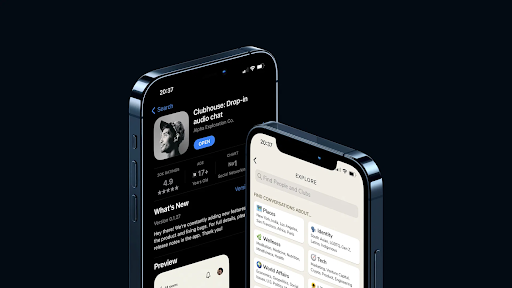
What is Clubhouse?
Clubhouse is a free, voice-based social media app with “rooms” to discuss various topics. It capitalizes on the familiarity and comfort mass audiences have found on Zoom’s “chat rooms” during the COVID-19 pandemic. Many describe Clubhouse as being on a Zoom call with the cameras off, a scenario that the remote workforce still in their pajamas at 2:00 PM knows all too well. While there is some benefit to this familiar user experience, there are also some drawbacks. Much like an overcrowded Zoom happy hour, the networking rooms can be difficult to identify the speaker and become unstructured. But maybe that’s the intent. Clubhouse has been described as a hybrid TedX talk and podcast where spontaneous conversations between strangers offer an invaluable perspective. It’s an app built for all audience types; from the passive listeners looking for entertainment, to the content creators with voices that want to be heard.
Clubhouse has taken efforts to provide a sense of order. For one, the “rooms” have a moderator with the power to mute and unmute audience members. Moderators are often thought leaders, influencers, subject matter experts, or even A-list celebrities. Users can follow their favorite moderators and have a chance to listen and participate, almost like a live two-way podcast. The app is invite-only, and the recent appearance of major celebrities and tech industry leaders has only heightened people’s curiosity and desire to adopt. Invitations are sent by current users, who receive two invites at the time of joining and the opportunity to earn more with app engagement. After news of big-name celebrities, such as Elon Musk, Oprah Winfrey, Mark Zuckerberg, guest-starring in Clubhouse rooms there has been a surge in invitations and adoptions. The app combines psychological desires of group belonging, the curiosity of mysterious and exclusive events, and fear of missing out (or “FOMO”) once you’ve achieved membership status to hook and sustain attention.
What Do Digital Marketers See in Clubhouse?
There once was a time when no one believed social media and business would overlap. But the lines of personal and professional have blurred over the years. Almost any industry can benefit from social media digital marketing, whether in paid or organic formats. Digital marketing campaigns from brand awareness to direct sales and conversions have proven successful on Facebook, Twitter, LinkedIn, and even Instagram. Any and every social media platform is subject to malleability. People will inevitably create their own use cases that meet their specific goals, which may or may not align with the original design. Platforms, like Facebook and Twitter, have evolved powerful marketing tools with robust targeting and analytical capabilities to reach worldwide audiences who have ingrained the apps into their everyday routines. We expect the same in time from Clubhouse.
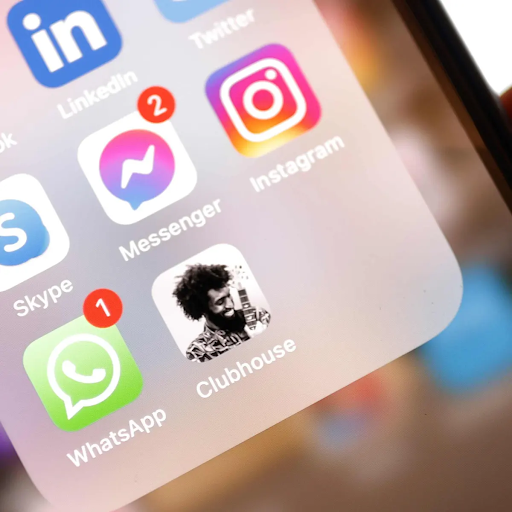
Clubhouse has a unique marketing potential because of the niche topic “rooms” and audiences. Users can select the topics of interest to them, and join “rooms” where influential moderators facilitate discussion on those topics. There is an educational element to the app, much like podcasts. This is where industry thought leaders can shine, and host “rooms” to share insights and discuss trending topics with partners, customers or competitors. Think of it as a thought leadership article turned interactive audiobook. It is a golden opportunity to spread brand awareness and strengthen reputation with an interested and interactive audience.
Digital marketers everywhere are eyeing the Clubhouse app for the potential access to exclusive audiences and marketing opportunities. Unique elements, like the invite-only exclusivity or completely live no-playback content, have users eager to join and addicted once a part of the group. In time, we expect the opportunity to share your brand story or your founding story, connect with customers, get product feedback, run focus groups, and generate awareness will only grow. And the early adopters will have a competitive edge.
Ready to be at the forefront of new technology and social trends? Get in touch with Bluetext for expert branding, digital marketing, and social media strategies.
Congratulations, you’ve launched your brand – now what? As a digital branding agency, Bluetext has seen many clients go through a rigorous rebranding process only to find themselves lost and unclear of the next steps. Our digital marketing recommendation? Focus on a ‘Go to Market’ strategy! After investing the time and resources in revamping your brand, it’s time to showcase the finished product with pride to your audiences!
What Exactly is a ‘Go to Market Strategy (GTM) Strategy?
At its core, a GTM strategy is a campaign to target audiences to ultimately get them to reach your rebrand. While the end goal may vary, announcing the brand and gaining recognition and attention is a critical first step for any newly branded company.
Popular end goals include:
- Raising awareness
- Recruitment
- Lead generation
- Showcase capabilities/products/solutions
- Stand out against competitors
- Solidify stance in the industry
Whether your company has adopted a new visual identity, brand name, messaging platform, or all three, you should make these changes across all advertising channels. Consistency is key. Users should be able to clearly recognize a shift and not be confused by residual legacy branding. You may need to update your digital marketing campaign assets such as display ad creative, social media profiles, and website content. These assets should be eye-catching to grab the attention of new users, but also generate interest in returning users familiar with the old brand. The most common and successful channels to include in your GTM strategy are:
- Paid search
- Paid display
- Organic social
- Paid social
The most effective campaigns combine channels & targeting/retargeting to drive top-of-funnel traffic all the way down the funnel for full conversion. The beauty of modern search and social advertising platforms is the ability to target extremely specific buyer personas. Especially in a wider GTM strategy, you want to ensure your advertising spend is smart and reaching the intended audiences. Bluetext recommends targeting by at least the following demographics:
- Industry
- Demographics
- Job title
- Income
- Geographic location
What About Merger & Acquisition GTM Strategy?
Centauri
Bluetext recently supported messaging, brand, and website launch of Centauri, a new company born from the merger of three powerful federal contracting agencies. Centauri’s GTM strategy followed the launch of their new website with two primary goals: brand awareness and recruitment. Bluetext served as the creative branding, website design, website development, and digital marketing strategy agency for Centauri. To meet Centauri’s goals, Bluetext created an omnichannel GTM strategy to drive users to the new website and complete applications.
To meet brand awareness goals, paid display, search and social campaigns were used to introduce the company and position them in the industry as the leading, mission-first experts. These campaigns used the brand’s creative and intriguing copy to attract the attention of top of funnel traffic. The brand awareness campaign ads targeted both current customers and potential recruitments, and when clicked took users to a custom landing page announcing the new company.
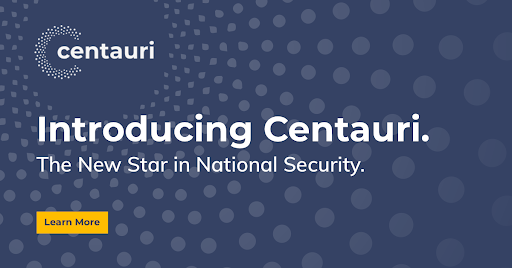
To achieve Centauri’s recruitment goal, Bluetext’s GTM strategy aimed to draw a connection between the new brand and their work/mission. This campaign was geared to lower funnel traffic, targeting specific candidate demographics. Using robust targeting options, Centauri was able to reach only the type of people who would fit the qualifications and be interested in their national security mission, such as veterans, engineers, and government cleared individuals. These campaign ads drove viewers directly to Centauri’s career portal to view job descriptions and apply directly.

BlueHalo
Another recent Bluetext success story is BlueHalo, formally AEgis. BlueHalo sought out Bluetext to assist with their new brand messaging, creative, website, and digital strategy. Similar to Centauri, their GTM strategy kicked off following the website launch to raise brand awareness and recruit new talent. Their brand awareness campaign focused on introducing the new company as a merger of various companies to create one unified and solid force in the industry. The campaign ads drove users to the new website, where they could learn more about the merger, strengthened capabilities and industry presence. Recruitment focused ads used the precise targeting of paid social, search and social channels to retarget qualified individuals and tie the new brand to company mission. When clicked, users could view all job openings, or those most relevant to their skills set.
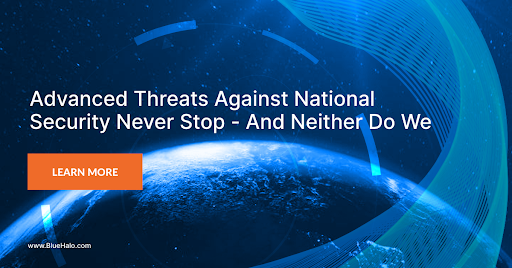
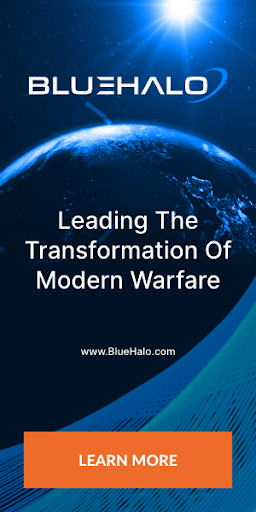
Bluetext has observed incredible success of clients who implement a GTM strategy. Having a game plan to follow the launch of your new brand or website allows you to swiftly transition from building a new brand to building business success. A GTM strategy helps reach customers, recruits and other audience members and provide competitive advantage.
Benefits of GTM also include, but not limited to:
- Creating awareness of a specific product or service.
- Generating leads and converting leads into customers.
- Maximizing market share by entering new markets, increasing customer engagement and outperforming competitors.
- Protecting the current market share against competitors.
- Strengthening brand positioning.
- Reducing costs and optimizing profits.
Want to make a splash with your GTM strategy? See what Bluetext can do for you.
2020 was quite the year, to say the least. In hindsight, 12 months ago, none of us would have believed in just one year the world would go through such a drastic lifestyle and workforce transition to cope with the global pandemic. 2020 was filled with many unexpected obstacles, quick pivots, and innovative solution finding, many of which are here to stay and evolve even further.
The pandemic only accelerated the digital transformation we sensed coming. It exposed an ugly truth that some business practices were flawed or outdated—and consequently unfit for the challenges of the 21st century. This resulted in the rise of new digital platforms, virtual events, and interactions. While 2020 may have been the year of perseverance, 2021 will be the year of ingenuity. The past year will be earmarked in history as an era of uncertainty and adaptation, but this upcoming year will be an opportunity to refine and enhance the solutions sought in time of need. Digital agencies such as Bluetext will continue to seek new solutions, new practices, and new experiences. The digital trends of 2021 will be focused on carving a path to a digitally-focused future durable enough to withstand an immediate continuation of remote interactions and a hybrid future that sustains virtual successes when companies return to the office.

Independent Interactions
The first digital marketing trend of 2021 is not new but will grow exponentially in importance in the future. Websites and platforms have grown over the past few years to lay the groundwork for an explosion of digital interactions this year. The key thing to keep in mind when considering interactive content is ease and engagement. With a majority of employees working from home, critical business meetings, sales pitches, and prospecting must occur online as well. Keep in mind your users will be interacting independently, without anyone to walk through it or focus their attention. Additionally, with users spending countless hours in front of their screens, it is harder than ever to capture attention and create memorable interactions.
Impressive interactions are rooted in design and user experience. The two complement one another, but should never be considered a substitute. A beautifully designed website may be eye-catching at first glance, but if the site is stuck on static elements or has poor user experience (UX) you can’t expect your user’s attention to last. Now more than ever, end users are suffering from screen fatigue and begin to notice a certain sameness caused by templated digital design commonly found by using website design and development companies like Squarespace and Wix. Organizations must reconsider design, content, audience and the interaction between all three to inject greater excitement, joy, and curiosity into screen experiences.

With remote work, companies now require new solutions to deliver experiences away from the physical spaces where sales teams, clients, and brands previously interacted. To steepen the challenge further, these interactions need to be intuitive and user friendly enough to empower independent users. Schedules and “office hours” have become more fluid than ever with a remote workforce. Your customers or clients will seek to find information at any hour of the day and will expect to be able to view demos, materials, or tutorials independently on their own time. To empower users to make important independent browsing, Bluetext recommends the following website enhancements.
- Detailed copy: Don’t underestimate the power of the written (or typed) word! It is time to invest in a thorough and detailed copy that will equip people with the critical information they need to make a decision.
- ChatBots: Even though we are behind a screen, we are still human. Humans ask questions, may need extra explanations, or get lost sometimes. Especially if your product or solution is complex, you cannot rely on a sales manager to verbally explain and answer questions. Consider adding a chatbot to your website to help remedy any challenges in finding information.
- Animations: Adding some motion to your webpages is a small step that makes miles of impact. A favorite motion trend Bluetext has seen within the tech and B2B industries are the animation of software screenshots to act as a mini demo to play on a loop.
People want to be inspired by what they see on their screens, and brands can step up to meet this demand. Brands that break free from industry norms and traditional design templates can achieve this differentiation. With the right content delivered through great design, an audience can find an on-screen experience just as compelling as a real-world experience.

Popular Platforms
In the new year, organizations will continue to seek new ways to communicate with people and deliver brand experiences from a distance. Online briefing centers gained many top agencies’ attention last year and will continue to grow in popularity and importance. What exactly is an executive briefing center? It is a virtual platform that surrounds your prospects with thought leadership, rich content, and interactive UX and recreates the in-person premium briefing experience. Compatible with a variety of well-known conferencing software, such as WebEx, Zoom, and Skype, a digital briefing center can support sales consultations, conferences, webinars, and so much more. The successful transition of the sales and proposal process from in-person to online is what will separate top companies from their competitors.
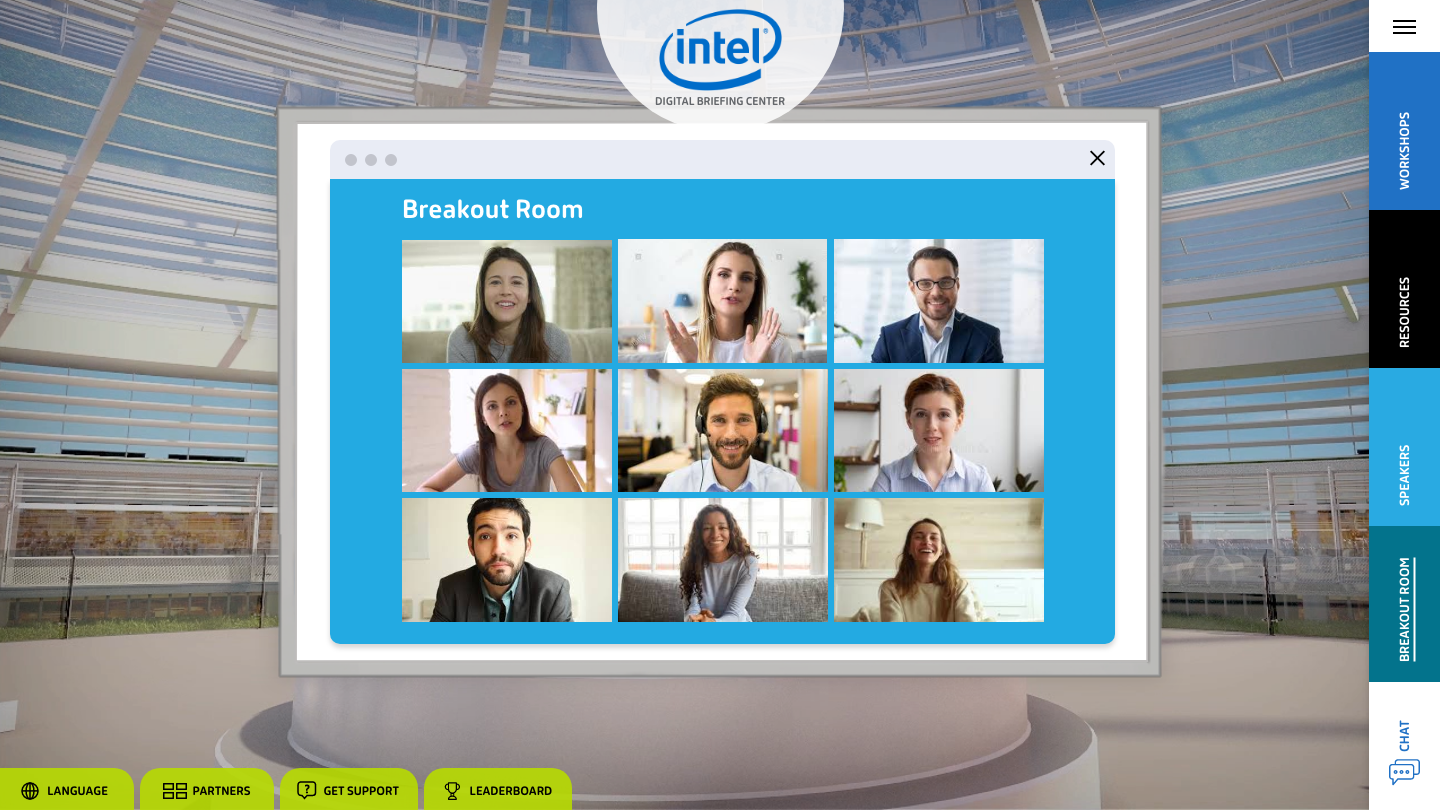
In 2021, virtual experience agencies forecast that virtual platforms will only grow in importance and popularity. Platforms will be re-engineered to support the growth of interactive content and solve pressing problems. Custom platforms like a digital briefing center or app may be a wise choice for corporations with a lot of content to communicate, but smaller firms can benefit just as much from widely adopted and available platforms. So which is the right choice for you? Consider the content. If you need to hold private sales consultations, training videos, or materials intended for select private audiences a briefing center may be the best fit to gate proprietary information. If you have valuable content of interest to wide audiences and with the goal of gaining brand awareness and thought leadership, consider using social media platforms in unique ways. This could include custom infographics and illustrations, interactive quizzes and games, promotional videos, and much more.
With the growth in free time and use of social media comes a growth of advertising and targeting opportunities. These platforms offer something critical to businesses: a way to easily create content and reach a lot of potential customers. Interesting and engaging content can become key drivers for lead generation, not just brand awareness. In 2021 Bluetext predicts social platforms will continue to emerge as places for people to monetize their creativity and reach wider audiences than ever before.
Virtual Events
Over the past year, many of us mourned the personal and professional rituals we once enjoyed. Whether that was happy hours with friends, traveling to annual trade shows and conferences, or attending annual corporate events, sacrifices were made to preserve public health. These events didn’t just support a business goal or networking opportunity, they represented a sociological ceremony and routine that binds people to their colleagues, communities, and wider society. Luckily, digital experience agencies, such as Bluetext, saw and empathized with this obstacle which resulted in the rise of virtual events.
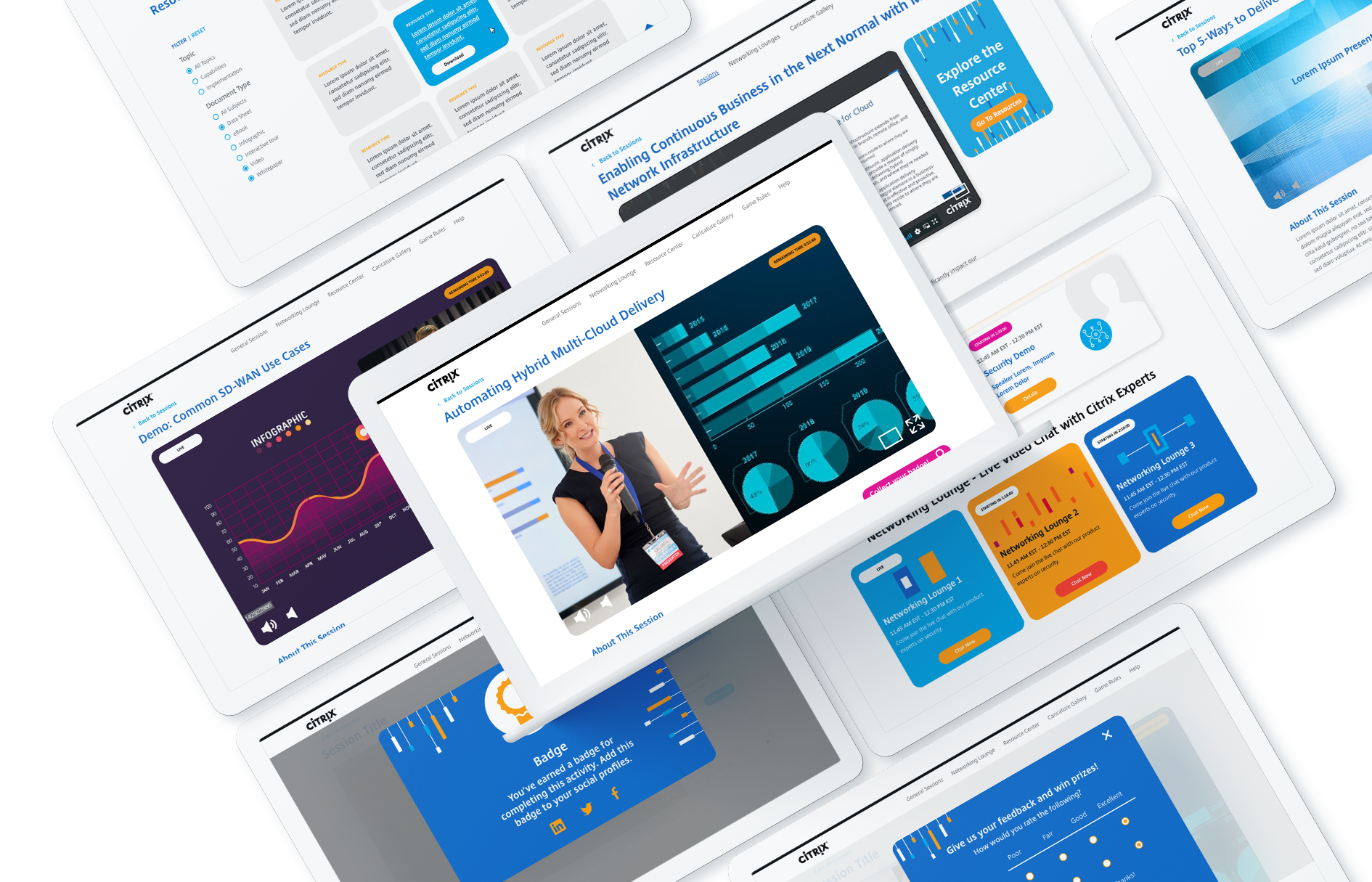
Virtual events started out of necessity, but are here to stay because of ROI and accessibility. “In the face of the COVID pandemic, events became virtual out of necessity. As we move into 2021 and beyond, many events will stay virtual not only because of continued safety concerns, but also as a result of lessons learned in 2020.” says Forbes.
Virtual events and experiences are no longer a sub-par substitute to in-person events, but the smarter solution for both a business’ bottom line and attendees. Hosting a virtual event provides the opportunity to reach a wider audience without the time and budgetary constraints of traveling. Attendees can selectively tune in to view the sessions most relevant to them, which frees up more time in their daily schedule. Unlike in-person events where employees are out of the office for days at a time, they are only out for a few short hours. The reduced time sacrifice allows for much higher attendance, and consequently more participation and overall event success.
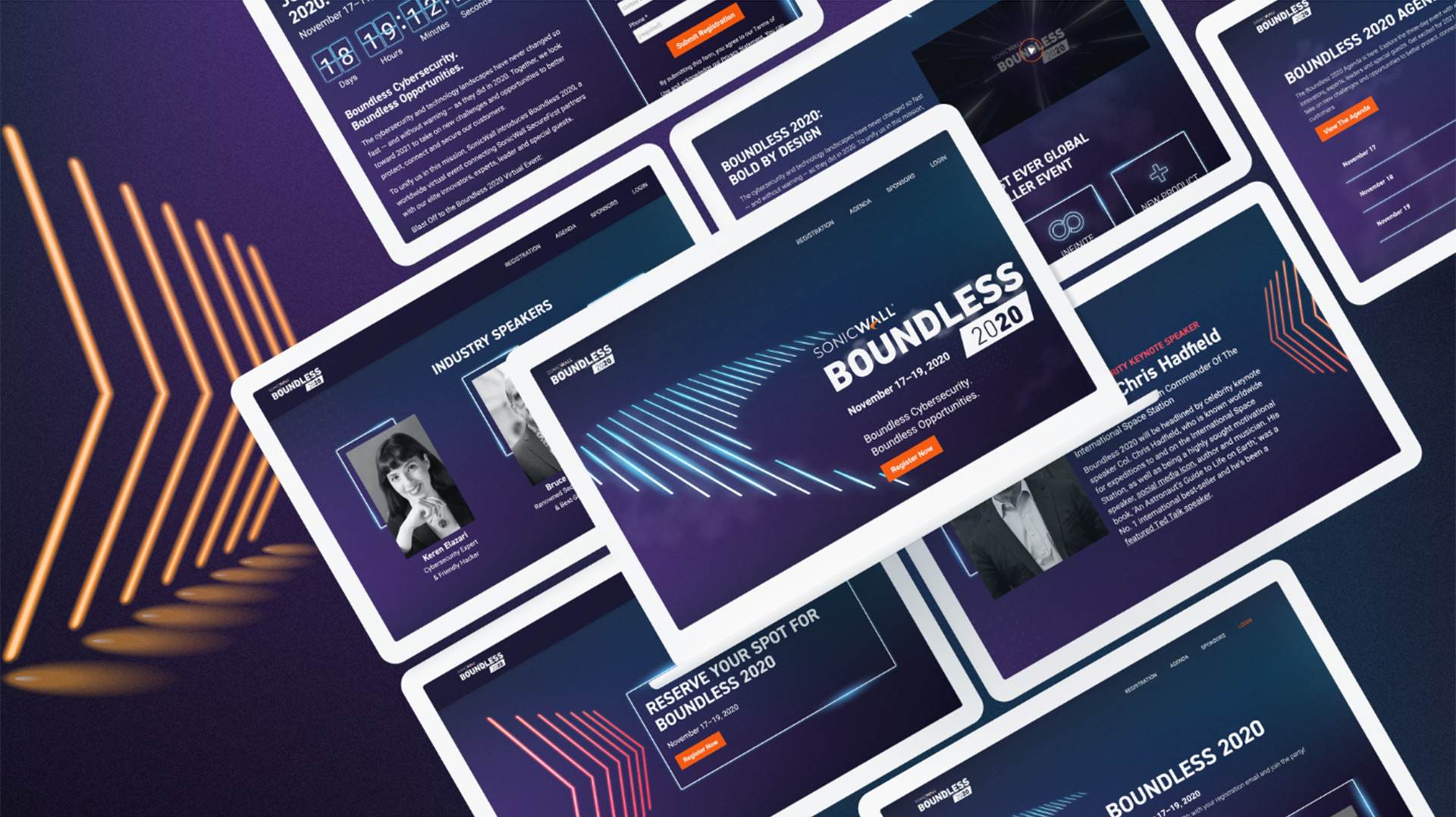
How can they participate from behind a screen? Virtual event marketing agencies, such as Bluetext, are designing and developing engaging interactive web platforms that allow for two-way communication and audience participation. From “lobby hall” homepages, to interactive sponsor “booths” and live video and chat functionalities there are many ways to help recreate the in-person experience of a live, in-person event. The key is to get creative and drive engagement through great speakers, rich content, and impressive UX. A virtual event offers the opportunity to reach new audiences, promote a sense of community and morale within existing audiences, and distribute valuable information in an attractive and interactive way. Added bonus? Companies that go the faux-live route with pre-recorded sessions and video content eliminate the risk of mistakes or stumbles.
So what can we expect in 2021? As a society, we have learned to expect the unexpected, but as digital marketers, we can expect to see a surge in digital platforms, interactive content, and the virtual recreation of past rituals. As an industry, digital marketing agencies have observed many organizations fully embracing a digital transformation in their marketing efforts. Technology that has revolutionized remote experience and enhanced team collaboration has taken root and will only continue to grow. Companies that take advantage of and invest in digital marketing early can gain a competitive edge.
So what are you waiting for? Contact Bluetext to learn how we can propel your digital strategy into 2021.
2020 will forever mark a significant milestone in remote work practices. To comply with COVID-19 safety protocols many companies have closed or limited office capacity and enabled their workforce to work remotely. There is a significant change in everyday work practices, but even more significant change in large industry events from trade shows, networking events, and conferences. While industry events as we know them are not yet possible, business must go on. Luckily, digital-based agencies such as Bluetext, have been hard at work to innovate solutions that can replicate the in-person experience as much as possible with virtual events.
Virtual events will become a universal industry standard in the future, regardless of when large gatherings become safely possible again. Hosting a virtual event eliminates the time and cost associated with work travel and allows flexibility to attend event sessions while keeping up with the normal day to day operations. Virtual events allow employees or colleagues from anywhere in the world to easily join from the comfort of their own home or office and can choose to be present at only event sessions relevant to them and their interests. Rather than having your whole team out for three days, there is the flexibility to attend select sessions for a couple of hours at a time.
If your company is considering hosting a virtual event, there’s a couple of things to consider first. After the success of Citrix Bootcamp and SonicWall Boundless 2020, Bluetext has rounded up their top tips for the first step of any virtual event: registration.
Ace the Virtual Event Invite
One of the first things to consider with any event is: Who is the audience? Is this a trade show for a number of different companies? An employee only training? Select clientele? A virtual event marketing agency will assist with the outreach to attendees, whether that strategy is based on a specific email list or advertised publicly. From email nurture campaigns to targeted paid advertising, the options are endless for inviting attendees. Based on who the target audience is, a digital marketing agency can prescribe the right strategy for your company and design promotional assets to get people interested in the virtual event.

Load Up the Landing Page
Once you’ve sent out invites or promotional messages, attendees will need a place to RSVP. Just like a traditional in-person event, a headcount of attendees is needed to properly plan and test for specific traffic levels. Registration numbers are also a great KPI to measure event success. To fully close the conversion, the landing page for the virtual event must be clear, concise and enticing. There’s no formula for the perfect virtual event registration page, but at Bluetext we recommend the following components:
- A concise listing of event details (date, time, time zone, etc.)
- Spotlight of the top event sessions to get users interested
- A sizzle reel to showcase the event highlights in a minute
- A clear and easy to find the registration form
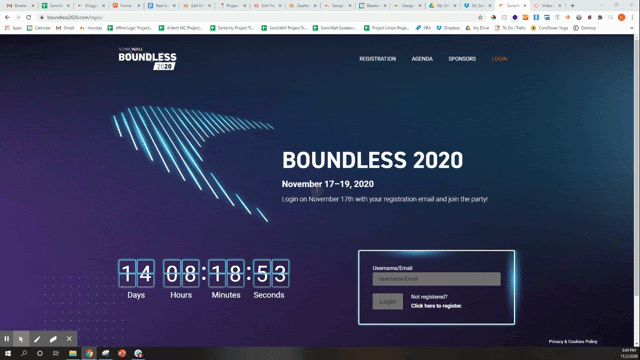
Who’s On the List?
A key component to consider with virtual event registration is registration security. Will there be proprietary information discussed at the event? Will sessions be targeted at only your employees to introduce not in market products or strategies? If so, you may want to consider white-listing your company’s email domain. If the event is centered around internal strategies and training, you may want to also black-list the email domains of your top competitors. Depending on the size and subject matter of the event, it may also be important to reinforce security by black-listing personal email addresses and ensuring all attendees are relevant business partners and colleagues.
Always Say Thank You!
Once a user has found your enticing landing page and successfully registered for your virtual event, don’t let the excitement end there. Be sure to send them an equally interesting thank you page. In our virtual event marketing experience at Bluetext, we have found that dynamic countdown clocks are a great way to get users excited about the event. A great thank you page may also want to link out to event FAQs, or highlight a special session to look forward to.
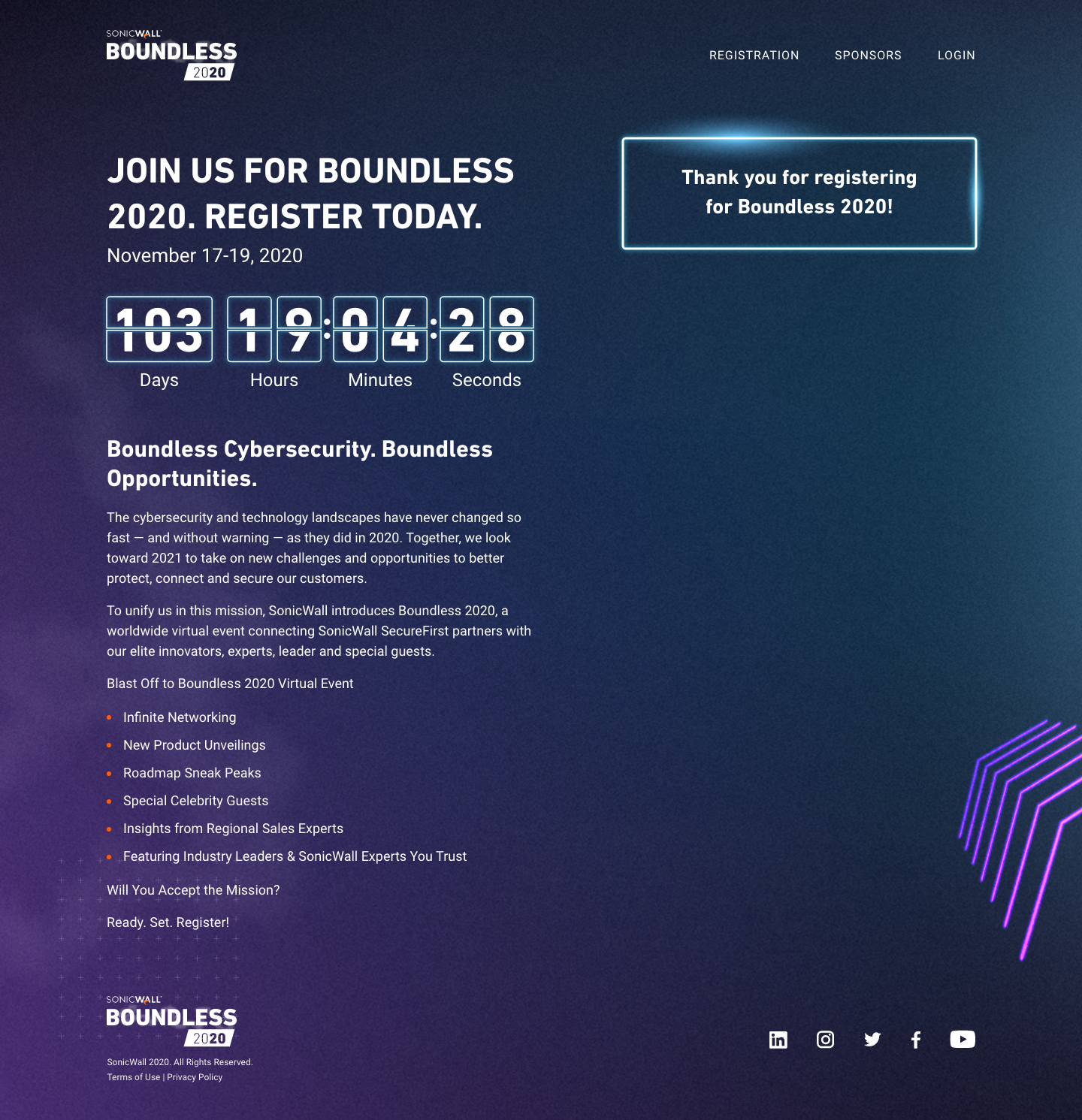
Reminder Emails They’ll Want to Read
Once a user is registered don’t let your virtual event fall off the radar. Use the registration email list to trigger a nurture email campaign that can send additional event details, reminders, and more! A full event agenda can be overwhelming to a user two months out but would be useful when they’re blocking off their calendar a week or so in advance. It’s always a best practice to remind users a week, a day, and an hour in advance of the date. Check out the recent SonicWall Boundless 2020 virtual email for some inspiration on event teasers and reminders.

2020 has been the year of transitioning workforces, meetings finally turning to emails, new office place attire, and most of all, virtual conferencing. With pandemic restrictions putting a pause on in-person interactions, many industry conferences, trade shows, and events have been forced to postpone, cancel, or adapt.
In the spirit of adaptation, many companies have found ways to work around the obstacles of the pandemic and preserve the annual events and conferences that customers and business partners have come to rely on. Virtual events have become the new normal. Businesses are realizing the potential of virtual conferencing and webinars, and using a variety of virtual networking platforms to achieve their event objectives completely online.
As an agency with virtual event marketing capabilities, Bluetext has seen a range of approaches and ways to make businesses virtual. Our favorite virtual event trend thus far has been the “real-corded” style of virtual events. Instead of simply posting videos or recordings online to viewers, some companies are opting to recreate the expected live event experience for viewers. This attempt to preserve the familiarity of traditional trade shows and industry events is well received and appreciated by attendees, as it gives some sense of normalcy and expectancies in an uncertain period of time that we live in. There is a large amount of risk that comes with hosting a completely live-streamed virtual event, including technical issues, presentation quality, user behavior, and platform capacity. However, clever companies have found a way to disguise recordings as live streams and provide some sense of community and group experience to viewers.
The “Real-corded” Experience
Here are some of our favorite ways recorded events have simulated live stream experiences:
1. Countdown Clocks
For SonicWall Boundless Virtual Event, a dynamic countdown clock was added to the pre-event site to show exactly how many days, hours, and minutes until the virtual event would go “live.” The pre-event site was loaded with everything a viewer might need to know about the event, including promotional teasers to agenda and FAQs.
2. Event Log-In
Once the countdown hit zero, the pre-event site updated to allow an attendee to log-in. Very similar to a normal in-person protocol, where a user would sign-in and verify that they had registered for the event before entering the venue. After logging in the user would be greeted with the simulated “Lobby” of the live event site.

3. Time Gated Resources
The pre-recorded video sessions were locked prior to their specified showtime and featured a branded thumbnail to notify an attendee the session had not yet begun. Just as a live event attendee could not time travel to future sessions, the event site did not allow viewers to fast forward the schedule. Once the session was 30 minutes away from scheduled showtime, a new countdown GIF would replace the thumbnail to announce the upcoming video.
4. Virtual Booths
Another hallmark of the virtual event experience was the affordance of networking. While the majority of the event was pre-recorded to allow for post-production editing and ensure visual and audio quality, there were portions of the event where viewers could join a streaming platform and chat in real-time with hosts.


All of these features had guests wondering, real (or recorded?) during the event. The transition between real and recorded video content was made seamless by custom web integrations and streaming platforms. Interested in making your virtual event truly come to life? Check out Bluetext’s virtual event experience, and contact us to learn how we can make virtual a reality for your business.
Catch the highlights and additional insights in the podcast edition of this post. Just hit play below!
Simplification is one of the strongest trends we’ve seen as a top design agency in recent years. With such growing popularity, it shows no sign of stopping. So why are brands dialing back on designs for a more minimalistic logo? Top graphic design and rebrand experts at Bluetext are debunking this design trend to explain why it’s a wise choice. For one, minimalist logo designs are easily recognizable and memorable, which is key to successful branding. This is why many up and coming companies prefer simplification over other artistic techniques. Similarly, established brands are stripping their logos of excessive details to add more weight to the brand promise. Uber, Yahoo, and Mailchimp have all recently released logos with cleaner, rounded lines to feel more approachable and user friendly.
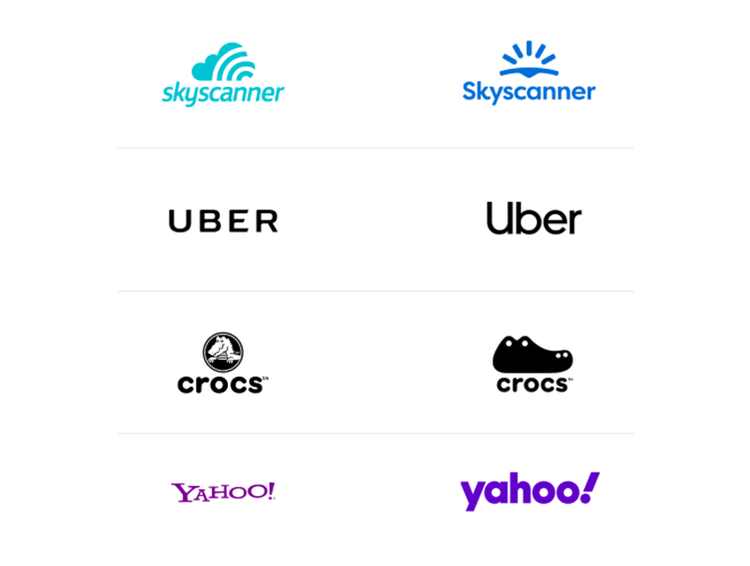 Why are these well-known logos going back to basics? We consulted our top graphics designers here at Bluetext, to get their take on the trend. Below are some of the most popular reasons for logo redesigns:
Why are these well-known logos going back to basics? We consulted our top graphics designers here at Bluetext, to get their take on the trend. Below are some of the most popular reasons for logo redesigns:
Complex and Cluttered Digital Environments
With nearly all companies moving to some sort of digital presence, users are constantly bombarded and overwhelmed with content to digest. Embellished logos only add to that already exhausted attention span, requiring time and concentration that people simply don’t have to spare. Cluttered online environments have trained us to scan, filter, and repeat — leaving little bandwidth to notice or appreciate fine detail.
User Consideration
Especially when coupled with features like dark mode, we are seeing brands designing more and more with user experience and comfort in mind. Darker screens and simplified details are easier on the eyes. Reduced eye strain and saved battery life is an added benefit that shows users you care, especially in a pandemic environment where almost all interactions have become virtual and vastly increased average screen time.
Mixed Mediums
Another key consideration for any brand is where your logo will be applied. On your website for sure, but what about printed materials? Perhaps corporate giveaways, like coffee mugs or canvas totes. Logo designs need to accommodate all of these possibilities and easily adapt to any medium. Thus, to save time and resources, companies opt for a clean and crisp logo that they are confident will crisply stand out on any medium and in any size.
Shrinking Screens
It seems every few months or so Apple unveils smaller and smaller iPhone models. And this product design trend isn’t limited to just mobile devices! Laptops, tablets, and even desktops have been consistently shrinking in size as users opt for more streamlined and portable devices. To future proof your brand or website it’s important to consider small screens and how your logo will display. If your design is riddled with lines and textures it may compromise readability on these devices. Instead of reverse engineering your logo to accommodate unique layouts and breakpoints, it’s far more efficient to begin with a simplified, and digitally conscious design.
Botox for B2B
Why do people get Botox? To smooth out those fine lines and wrinkles and look younger! The same principle applies to mature and established brands. In order to get a digital facelift and appear fresh and modern, experienced brands are smoothing out the details of their logos and brand graphics. Simplification of logos gives your company a rejuvenated update, while still preserving the established brand reputation.
Simplicity Inspires Confidence
Less is more. A strong and simpler logo exudes an air of confidence that your brand knows what it’s doing, and lets the reputation speak for itself. Brands should consider a logo as a signature, rather than the story. Your logo should be a quick snapshot of your brand that triggers a memory of your product or service, not an attempt to illustrate your offerings. A simplified logo, especially in a wordmark format amplifies your brand and creates a distinctive presence.
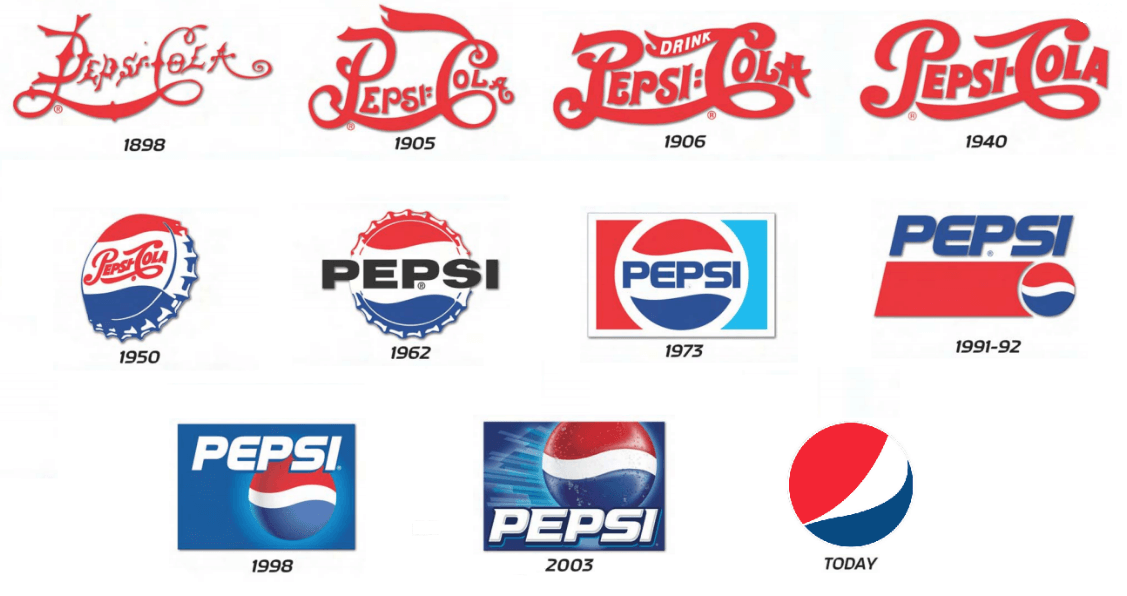
The Verdict
The verdict on logo simplification? Cleaning up design elements not only offers immense brand value and memorability but also has numerous digital benefits. As a top digital marketing and user experience agency, we encourage clients of any industry to always be thinking about the future first. With an inevitable shift toward more digital-based lifestyles, smaller screen sizes, and user considerations it is a wise investment to reinvigorate your brand with a timeless logo design.
